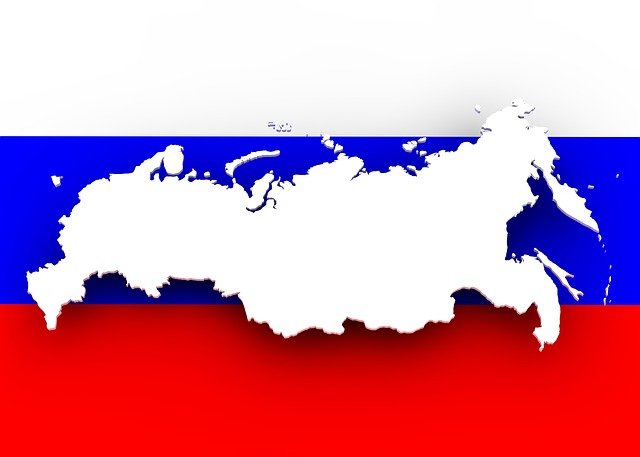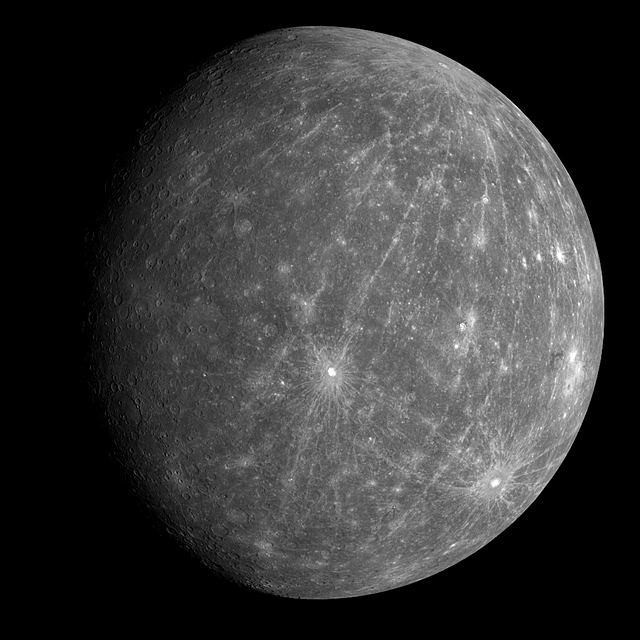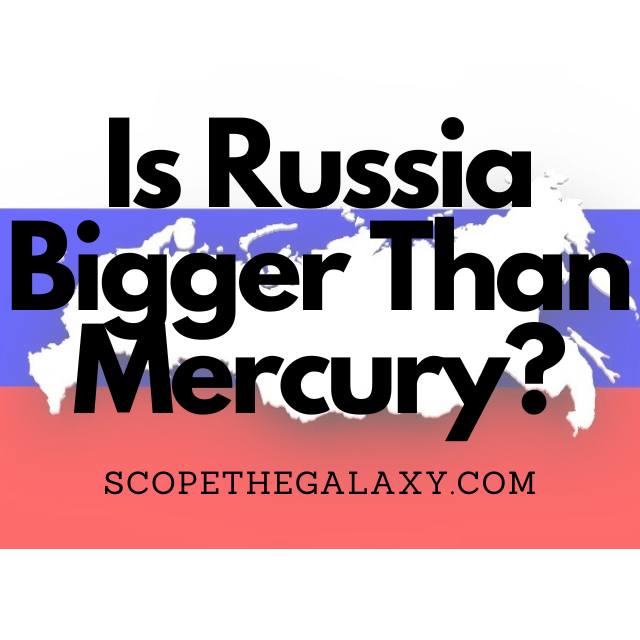*This post may contain affiliate links. This means we may make a commission if you purchase an item using one of our links*
Even if Russia is the biggest country on all of Earth, it’s overall size and volume isn’t anywhere near that of Mercury’s. When looking at surface area, Russia’s is 17.1 million km² whilst Mercury’s is 74. 8 million km²and Mercury’s volume is numerous times larger at 60.8 billion cubic kilometers compared to Russia’s 632.7 cubic kilometers.
There are various other factors that contribute to the size of both of these bodies so, continue reading for a more thorough look at their difference in sizes below.
How Big Is Russia?

Based purely on surface area Russia has the most surface area amongst every country in our solar system, which is more than a large a variety moons across our solar system, the likes of which includes Pluto’s largest moon Charon, Uranus’ moon Titania among numerous others.
From east to west Russia encompasses roughly 9,000km, with the entire surface area of the country adding up to roughly 17.1 million km². The end to end length of Russia is more the double that of the moon and 4 times the diameter of Pluto.
Russia also has 2 mountain ranges, which are the Ural Mountains and the Caucasus Mountains which make up a large portion of the countries surface area.
The Ural mountains have a surface area of 2.225 million km² with the overall end to end range of the mountains roughly 2,500km. The northern region of these mountains have mountains that average peaks of around 1,000m so it’s not necessarily the tallest regions in the world but still very tall nonetheless.
As for the Cacasus Mountains, they are far smaller with a surface area of 477,488 km² with the largest mountain in the region called Mount Elbrus with a peak of 5,642m.
in regards to the depth of Russia’s crust, that is estimated to be 37km on average. If we were to multiple Russia’s surface area with the average thickness of the crust, Russia’s overall volume would come out to roughly 632.7 million cubic kilometres.
All of these factors, such as the height of the mountains, to the end to end distance from east to west and thickness of he countries crust add up to make Russia the literal biggest country on Earth and bigger than a fair share of moons that orbit the other planets in our solar system.
How Big Is Mercury?

Mercury is the smallest planet in the Milky Way, with a diameter of 4,878km – around 50% larger than the diameter of Mercury. At only two-fifths the size of Earth, Mercury is even smaller than the largest moons in our solar system, Ganymede and Titan.
This planet is a similar size to our moon and is only 58 million kilometers from the Sun, which means that the Sun would appear three times larger if we were standing on Mercury compared to standing on Earth. And because of this proximity, surface temperatures reach as high as 430 degrees Celsius during the day.
This rocky planet possesses an iron core that comprises a large part of the interior; it accounts for around three-quarters of Mercury’s diameter. Approximately 70% of Mercury’s weight is attributed to its iron, with the core a similar size to our moon. Atop the core sits a rocky mantle of approximately 55km in thickness.
The surface of Mercury is similar to that of our moon, with a number of impact craters caused by meteorite collisions. Some of the most significant impact basins include Caloris (with a diameter of 1,550km) and Rachmaninoff (with a diameter of 306km), created by early asteroid impacts.
Mercury has many areas of smooth terrain, along with cliffs that stretch for hundreds of kilometers and reach up to a mile into the sky. These cliffs were formed over billions of years as Mercury’s interior cooled and contracted.
And NASA’s research into these cliff-like landforms – or scarps – shows that Mercury continues to shrink. The size of the scarps displays their youth and suggests that Mercury is still tectonically active, just like Earth. As the interior continues to cool, the planet will continue to contract.
The surface area of Mercury is around 74,797,000 square kilometers, about 1.7 times the surface area of the Asian continent.
Furthermore, Mercury is spherical in shape so it’s overall volume would blow the value of any if not all countries and countries on Earth, out of the water.
This is because Mercury’s volume of 60.8 billion cubic kilometers makes it so their volume doesn’t even come close to the cubic measure of even the smallest planet in our solar system.
Summary
Although Russia is huge when all things are considered and even if it is almost twice Mercury’s length at 9,000km compared to Mercury’s diameter of 4,878km, when the surface area and volume is taken into account, Mercury is simply much larger.
It’s surface area is nearly 4 times larger and the cubic volume almost 100 times more. Russia is mostly a flat surface whilst Mercury is a ball like shape and has far more depth, which is why it not only dwarfs Russia but even the largest continents on all of Earth.

